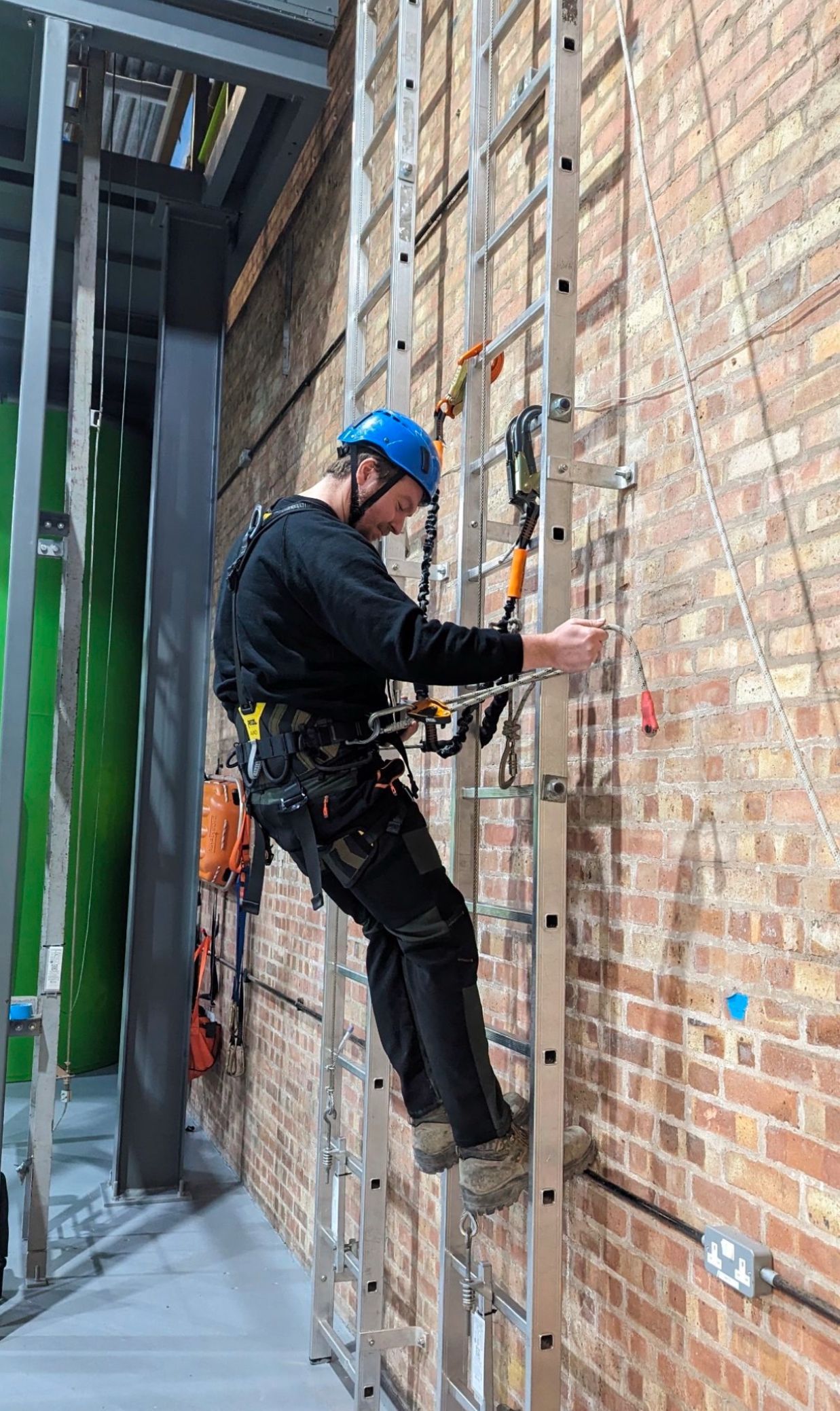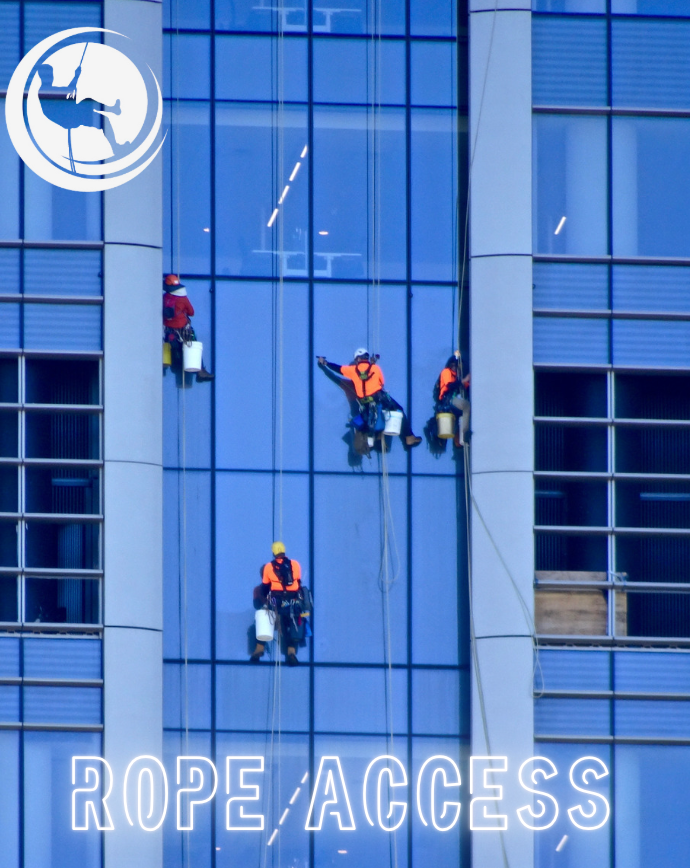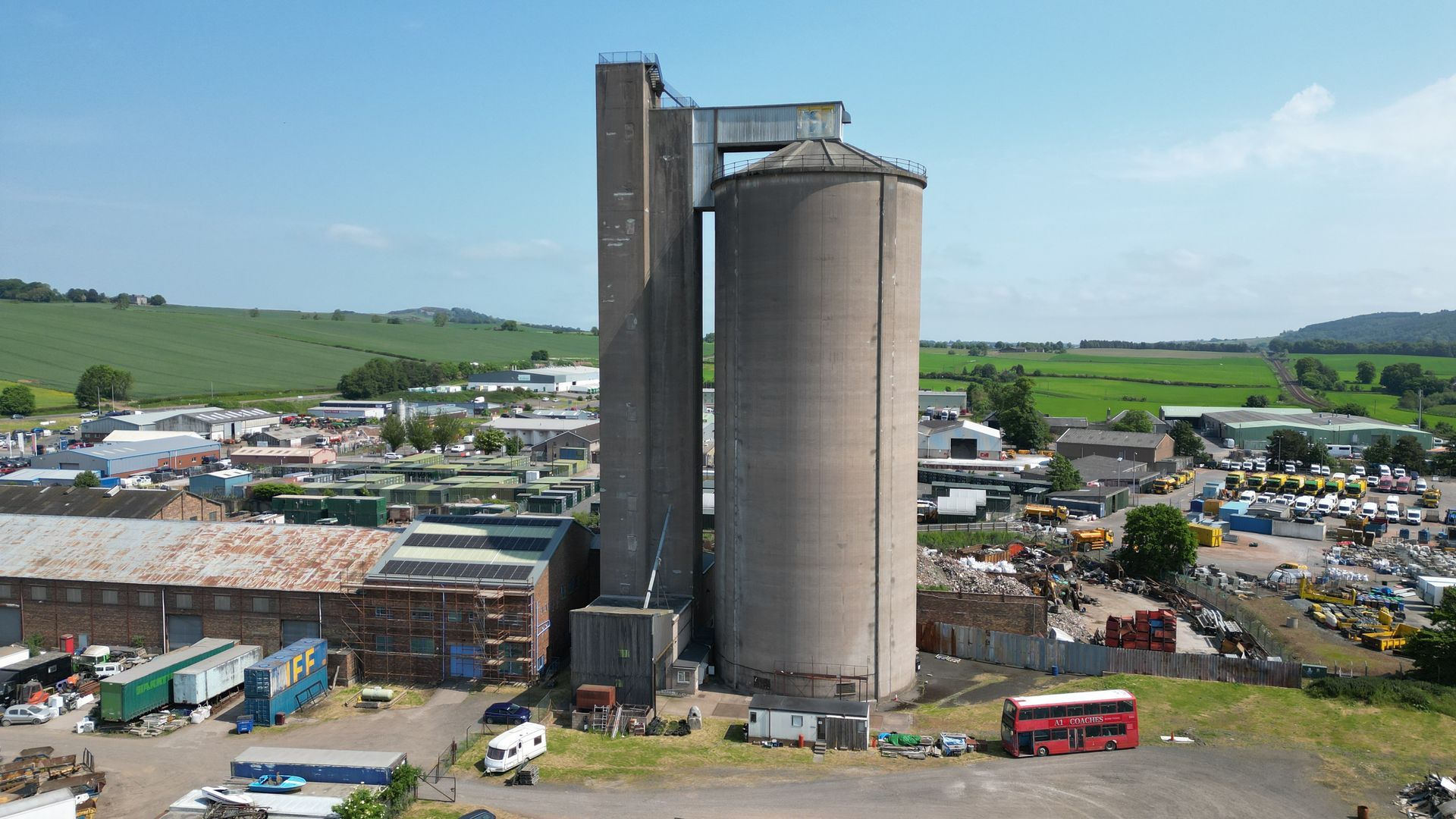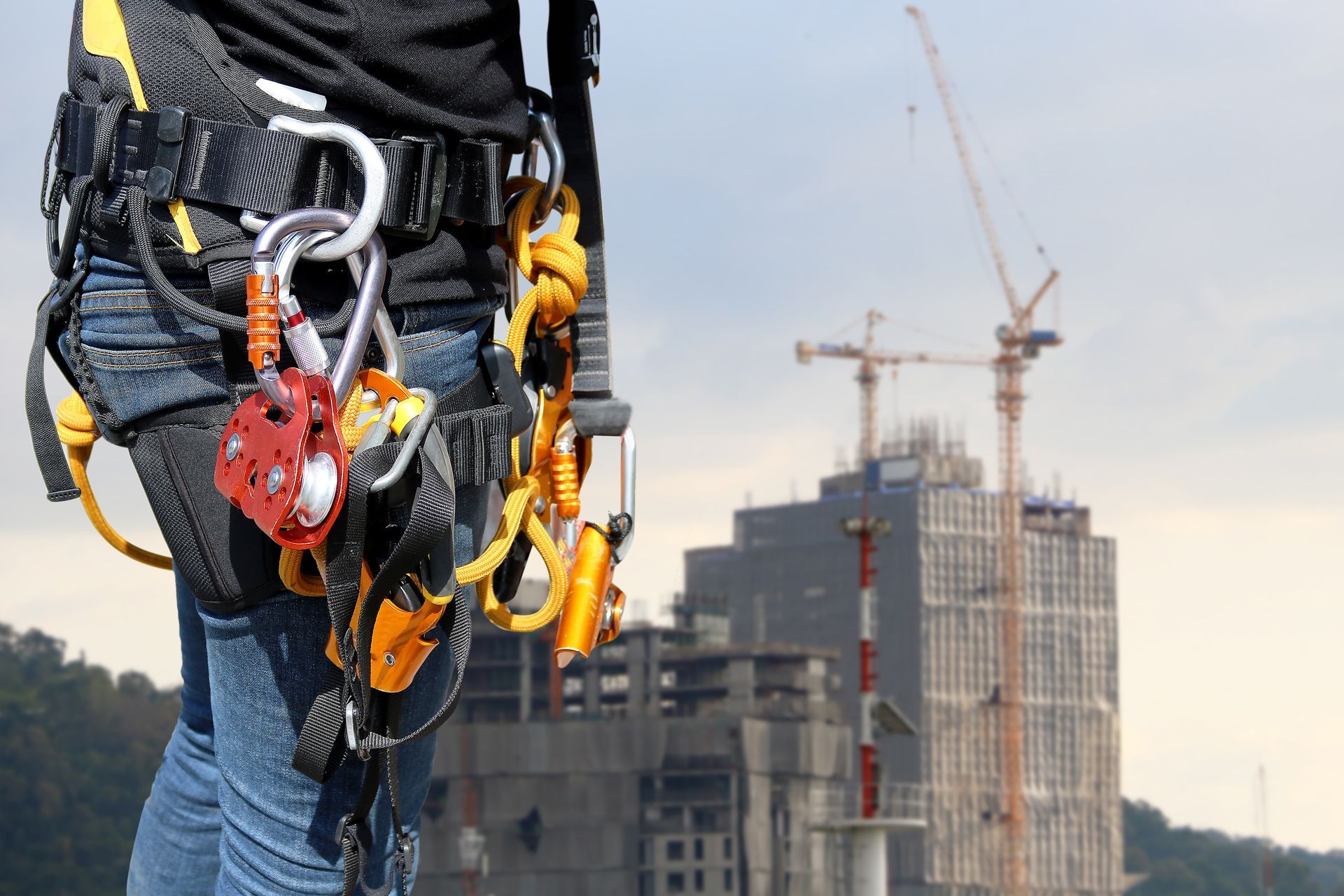GWO Training Courses

GWO Training Courses: Everything You Need to Know in 2025
The Global Wind Organisation (GWO) is an internationally recognised body that sets safety and technical training standards for the wind energy sector. If you’re looking to enter or advance in the wind industry, completing and re-certifying GWO accredited training courses is essential.
This guide will provide you with an in-depth look at GWO training courses, their importance, and a brief overview of course content, and modules on offer in the UK. Whether you’re an aspiring wind turbine technician or a company ensuring your wind turbine worker safety, this post will help you understand everything about GWO training.
What is a GWO Training Course?
GWO training courses are designed to ensure the safety of workers in the wind energy sector. The training consists of standardised modules that equip individuals with the necessary skills to handle the risks associated with working on wind turbines.
GWO training is recognised worldwide, and many employers in the wind industry require workers to hold valid GWO certifications.
Why are GWO Training Courses Important?
GWO training courses are vital as they ensure wind turbine workers are equipped with essential safety and technical skills needed for high-risk environments. These courses are designed to enhance service quality, reduce operational risks, and ultimately contribute to cost-effective maintenance solutions for wind farm turbine repair and inspection.
Ensures Worker Safety
Wind turbines are located in high-risk environments, often at great heights and in remote offshore locations. GWO training provides the knowledge and practical skills to handle emergencies, reducing workplace accidents.
Industry Requirement
Many companies in the wind industry require workers to be GWO certified. Holding a valid GWO certificate improves employability and career progression.
Internationally Recognised Certification
GWO training is accepted worldwide, allowing certified individuals to work across different countries and projects.
Compliance with Safety Standards
Governments and regulatory bodies often mandate strict safety training for wind energy workers. GWO courses ensure compliance with these safety regulations
How GWO Training Courses Have Evolved Over Time
Since its establishment in 2012, GWO training has continuously evolved to meet the changing needs of the wind energy sector. As technology, safety standards, and industry demands have advanced, GWO has expanded and refined its training programs. Below are key examples of how GWO training has developed over the years.
Expansion of GWO Training Course Offerings
Initially, GWO training focused on basic safety principles with its Basic Safety Training (BST) program, which covered essential safety skills such as working at heights, first aid, manual handling, and fire awareness. Over time, additional courses have been introduced to address more specialised skills, including:
• GWO Basic Technical Training (BTT) (2017) – Designed for technicians new to the industry, covering mechanical, electrical, and hydraulic systems.
• GWO Advanced Rescue Training (ART) (2018) – Aimed at improving rescue techniques for technicians working inside wind turbines.
• GWO Enhanced First Aid (EFA) (2019) – Provides more in-depth medical training for remote wind sites.
• GWO Control of Hazardous Energies (CoHE) (2022) – Teaches safety protocols for dealing with hazardous energy sources like electricity and hydraulics.
Integration of Digital Learning & Blended Training
Initially, all GWO training had to be conducted in person. However, in response to advancements in e-learning and the need for greater accessibility, GWO introduced blended learning options. Participants are now able to complete certain modules remotely before attending in-person practical sessions. By offering hybrid courses, training has become more accessible for workers in remote locations whilst also reducing travel costs,
Improved Training Standards & Realism
As wind turbines have increased in size and complexity, GWO training has adapted to include more realistic training simulations with many centres now using advanced wind turbine nacelle simulators to replicate real working conditions. Furthermore, the expansion of offshore wind farms has led to an increased emphasis on sea survival training and emergency evacuation procedures. GWO training consistently updates to reflect the latest industry regulations and risk assessments.
Standardisation & Global Recognition
In the early days, safety training varied by region and employer. GWO training has since become the global benchmark for wind energy safety, with:
• Adoption by major wind energy companies worldwide
• Standardised training records through the WINDA database, allowing employers to verify certifications easily
• Alignment with international safety regulations, ensuring compliance with global industry standards
Focus on Sustainability & Industry Growth
As the wind energy industry expands, GWO training now includes modules that focus on sustainable work practices which focus on reducing the environmental impact and promoting long term workforce sustainability. Some providers have also begun to incorporate training on managing stress and working isolated conditions.
Types of GWO Training Courses
GWO training consists of several core modules, with additional specialized courses available for advanced roles.
GWO Basic Safety Training (BST)
The GWO Basic Safety Training (BST) is the most common course and is required for anyone working in the wind industry. It includes:
a) Working at Heights
• Use of personal protective equipment (PPE)
• Fall prevention and rescue techniques
• Safe ladder climbing and working platforms
b) Manual Handling
• Safe lifting techniques
• Reducing strain and injury risk
• Ergonomics and movement best practices
c) Fire Awareness
• Identifying fire hazards
• Fire prevention and extinguishing techniques
• Safe evacuation procedures
d) First Aid
• Basic life support and CPR
• Dealing with injuries and medical emergencies
• Safe handling of unconscious casualties
e) Sea Survival (for Offshore Workers Only)
• Survival techniques in offshore environments
• Use of life rafts and personal flotation devices
• Emergency evacuation drills
GWO Basic Technical Training (BTT)
The BTT course is designed for individuals new to the wind energy sector, covering:
• Mechanical systems
• Electrical systems
• Hydraulic systems
• Installation procedures
GWO Advanced Rescue Training (ART)
This course is essential for those involved in rescue operations at wind turbine sites. It covers advanced rescue techniques in various turbine environments.
GWO Enhanced First Aid (EFA)
A more in-depth version of the basic first aid course, covering additional medical emergency scenarios in remote locations.
GWO Slinger Signaller (SS)
This course teaches the skills required to safely lift and move heavy loads within wind turbine environments.
GWO Control of Hazardous Energies (CoHE)
This course ensures workers can identify and safely manage hazardous energy sources such as electricity, hydraulics, and mechanical systems.
Who Needs GWO Training?
GWO training is required for various professionals in the wind industry, including:
• Wind turbine technicians
• Site supervisors and managers
• Maintenance and repair personnel
• Engineers working at wind sites
• Rescue teams and safety officers
• Workers transitioning from other industries
GWO courses involve both theoretical and practical training. Attendance is mandatory, and participants must pass assessments to receive certification.
After completing the course, your certification will be registered in the WINDA database, a global system used to verify GWO training records.
The Future of GWO Training
Looking ahead of 2025, the Global Wind Organisation (GWO) is expected to continually adapt and expand its training offerings to keep pace with the rapid advancements in the wind energy sector. As the industry evolves, GWO is likely to introduce more specialised courses that cater to the unique challenges posed by emerging technologies, such as offshore wind farms, floating turbines, and advanced turbine maintenance techniques. These specialised courses will be designed to equip workers with the specific knowledge and skills needed to safely operate and maintain cutting-edge wind energy systems.
In addition, GWO is expected to further enhance its digital learning platforms, making training more accessible and flexible for workers across the globe. This could likely involve expanding virtual reality (VR) and augmented reality (AR) training tools to simulate real-world scenarios, allowing workers to practice emergency response techniques or equipment maintenance in a safe, controlled environment.
The integration of such innovative technologies will ensure that training remains both effective and engaging, while reducing the need for expensive in-person sessions.
By staying updated with GWO certifications every two years, wind energy workers can ensure they are equipped with the latest safety skills, knowledge of industry best practices, and an understanding of the latest technologies. This not only enhances the safety and efficiency of wind energy operations but also positions workers to advance in their careers as the industry continues to grow and innovate at a rapid pace.
Learn More About Dangle Rope Access Today
Here at Dangle Rope Access, we provide a variety of comprehensive inspection, access, coatings, and composite (IACC) industrial services. Our services are available to both the private and public sectors.
We offer high-quality proven solutions that will help reduce maintenance costs in both the long and short-term. We are based in Dundee, Scotland and also have offices based in Edinburgh, along with our newly established training centre in Northern Ireland Dangle Academy. Due to our company size and structure, we are able to offer a flexible and versatile approach to the way we run our business and the services that we offer our clients. And, as a leading painting company, we’ve worked on several renewable energy projects in the UK, Europe, and the US.
We work with both on and offshore with wind farm operators, and asset owners. For offshore wind farm maintenance, to onshore building maintenance, we can cover both the East and West coasts.
To find out more about how our team can help you contact us today. Our friendly, professional and helpful team is always on hand to help!
Frequently Asked Questions (FAQs)
How long does GWO training take?
The standard GWO Basic Safety Training (BST) course takes 4-5 days to complete depening on the training provider and if the offshore sea survival module is required.
Can I take GWO training online?
Some theoretical components can be taken online for those looking to renew a in date GWO certificate, but practical sessions must be completed in person and for those new to the wind energy industry.
Is GWO training mandatory?
For most wind energy jobs, yes. Many employers require GWO certification before allowing workers on-site due to the risks involved, you must be able to demonstrate a minimum level of competency.
How long is GWO training valid?
GWO certificates typically remain valid for 2 years. After this period, a refresher course is required to maintain certification.
What happens if my GWO certificate expires?
You need to take a GWO refresher course before your certification expires. If it lapses, you may need to retake the full course again which usually costs more than a GWO refresher.
Where can I verify my GWO certificate?
All certifications are registered in the WINDA database, which employers can access to verify your training.










